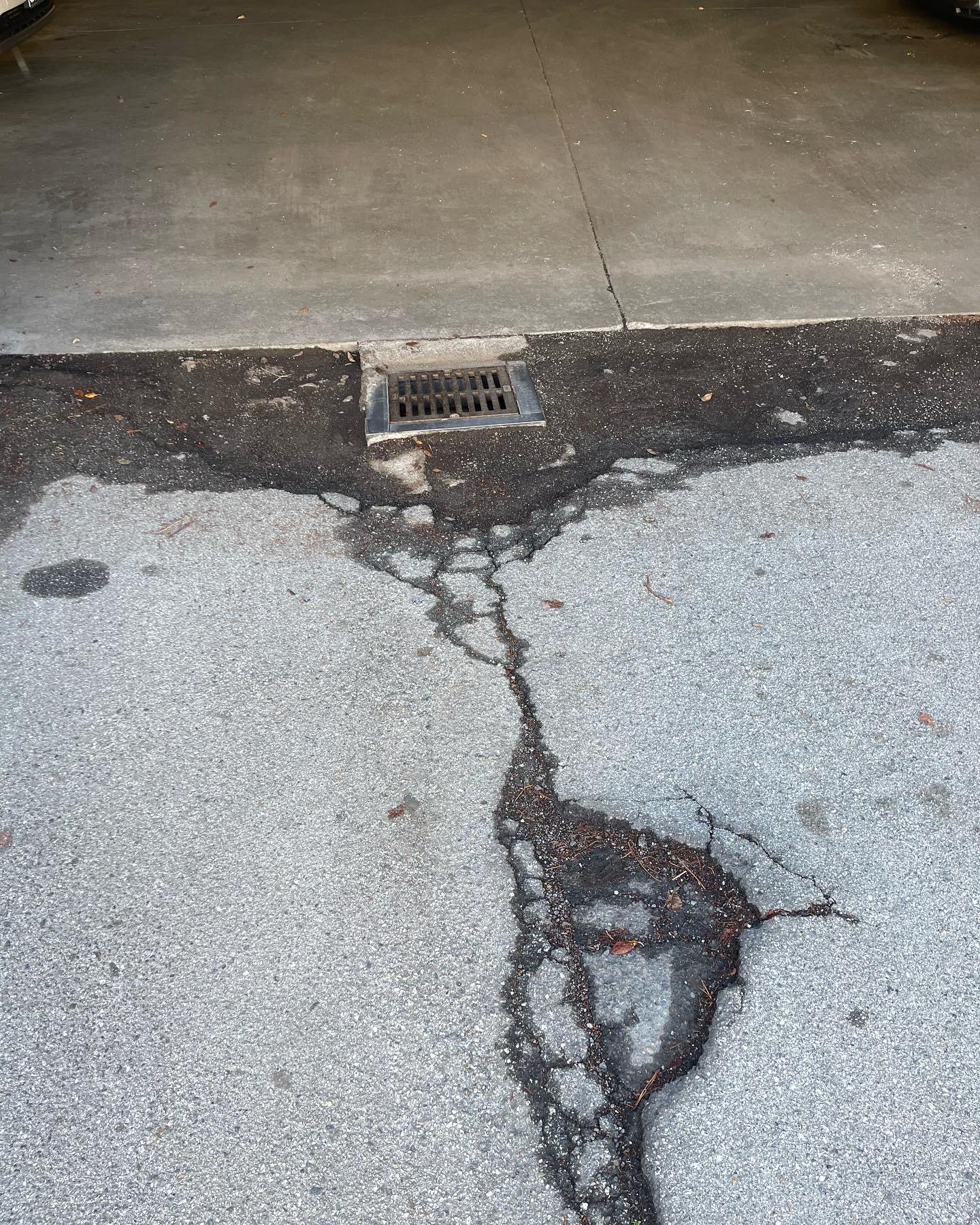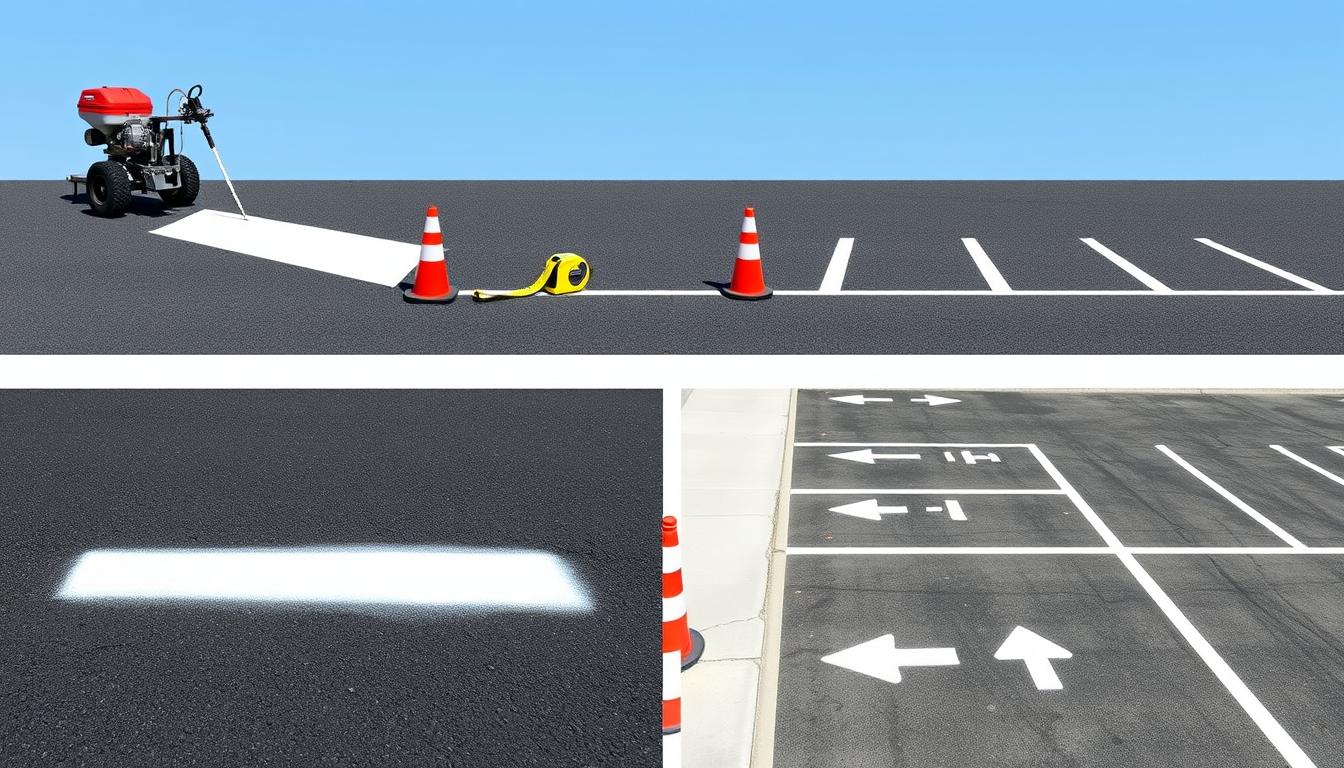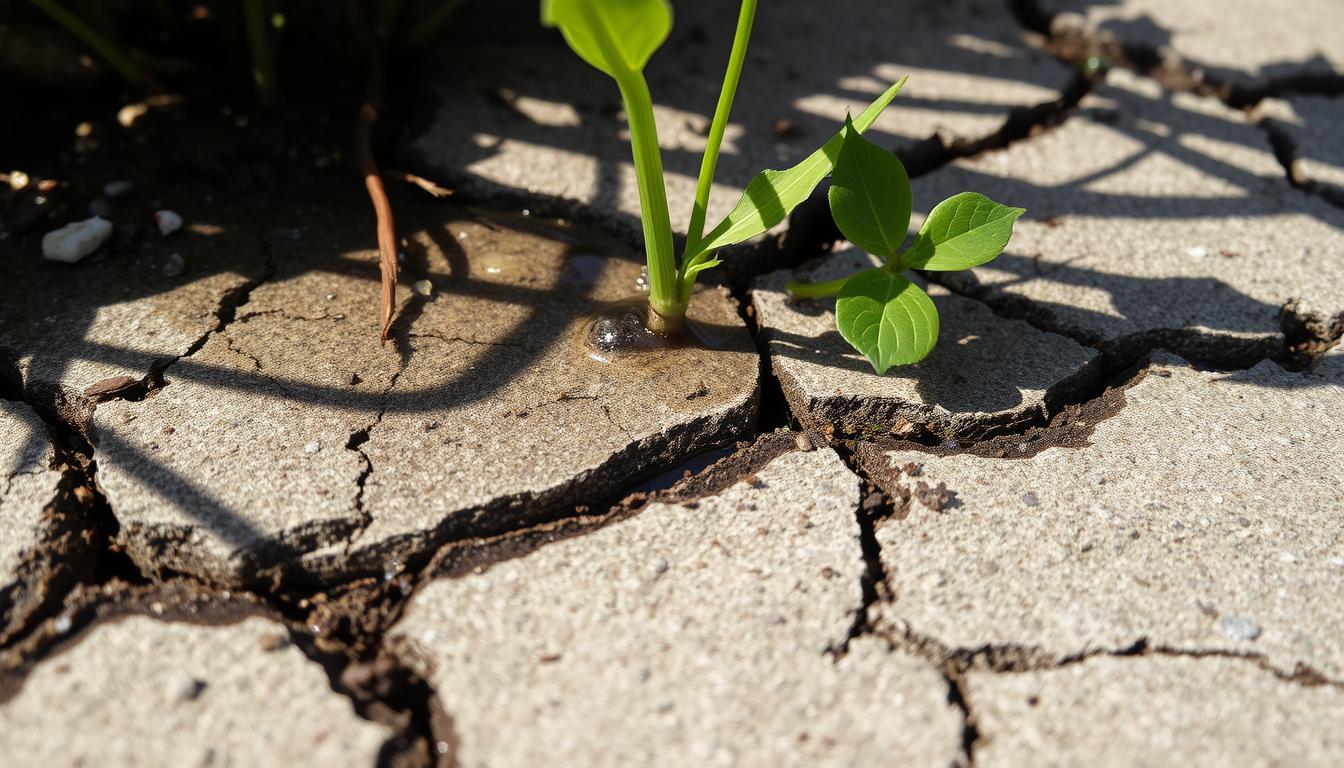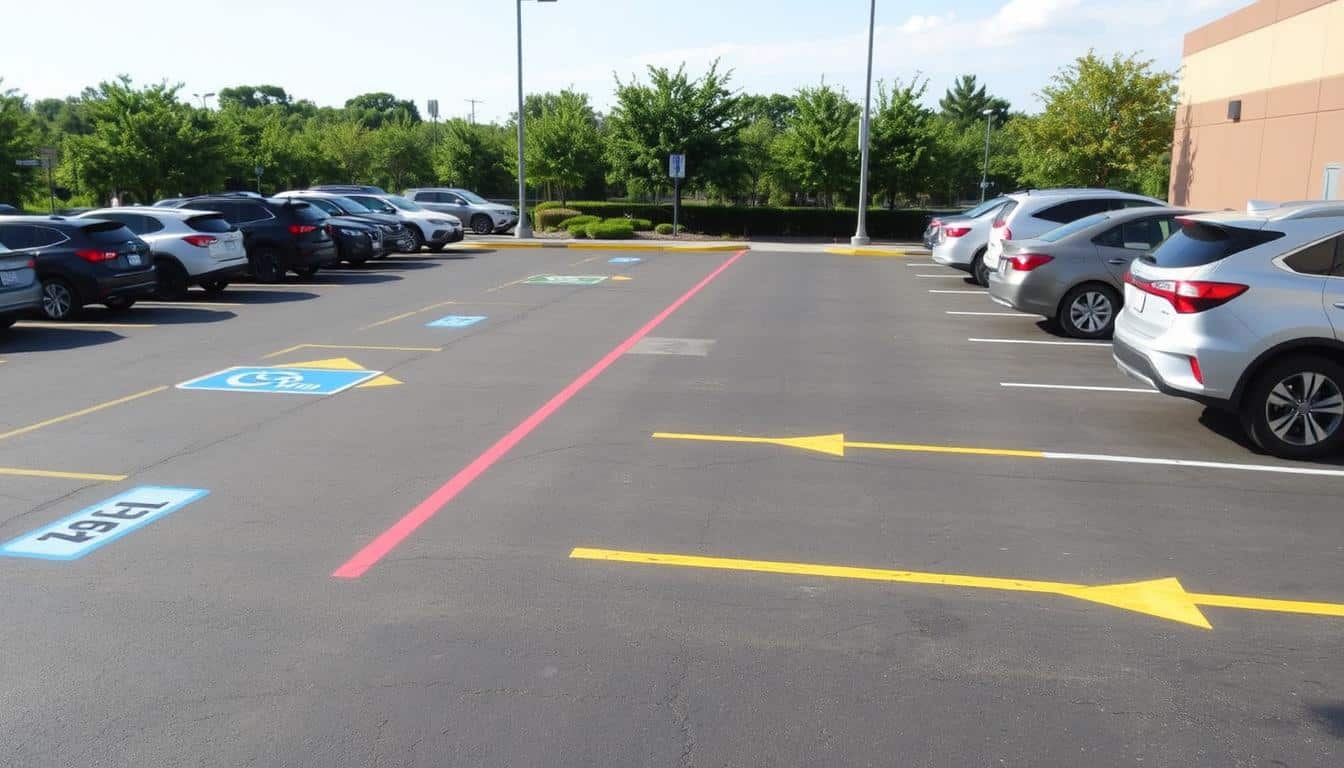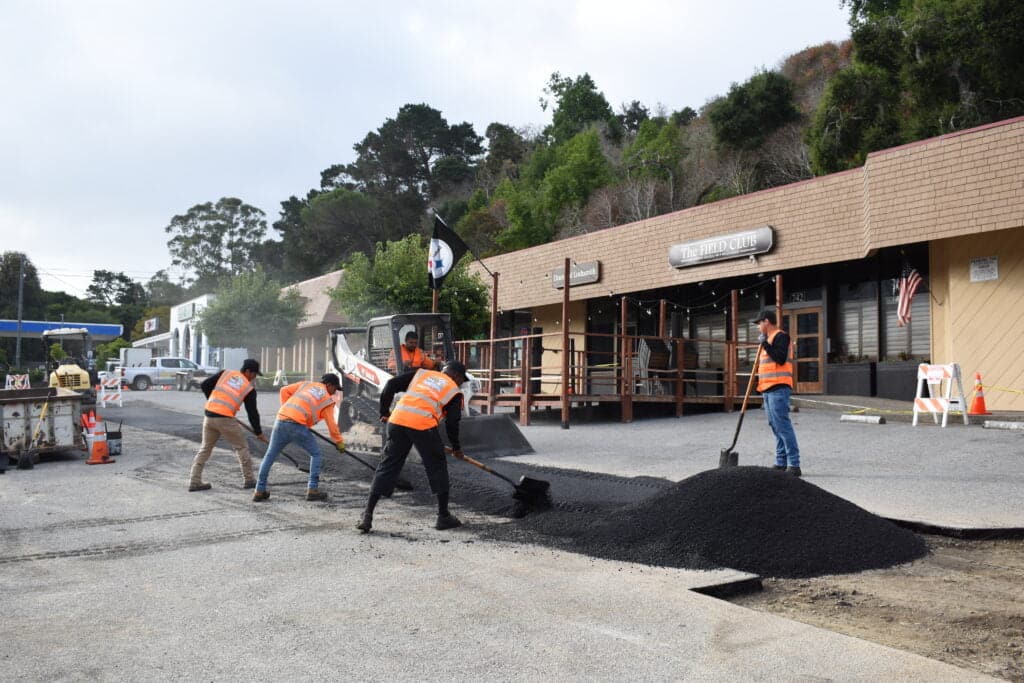
Throughout the year, the weather fluctuates significantly. We go from cold winter to hot summer and then to rainy seasons. This means asphalt quality gets tested a lot.
Changes in temperature, humidity, and UV rays can affect pavement and Asphalt Quality. It’s important to understand these challenges.
By taking care of your pavement early, you can make it last longer. Things like sealcoating, filling cracks, and fixing problems quickly can help. This keeps your investment safe from nature’s changes.
Hot and Cold Climates: How They Affect Asphalt Quality
Extreme weather tests how well asphalt can handle it. Let’s look at what happens in hot and cold weather:
Hot Climates
In very hot places, asphalt faces big challenges. Here’s what happens:
- Expansion and Contraction: Asphalt gets bigger in the heat and smaller in the cold. This cycle can make it crack over time.
- Sun Damage: The sun’s UV rays can harm asphalt. UV rays can make it gray and brittle.
- Softening: Heat can soften asphalt, causing it to get rutted or imprinted, mainly where there’s a lot of traffic.
- Oxidation: Sunlight can also make the asphalt binder oxidize. This makes it lose flexibility and crack.
Cold Climates
Cold weather also poses challenges for asphalt:
- Freeze-Thaw Cycles: Water in cracks can freeze and expand, then contract when it thaws. This can cause cracks to get worse.
- Ice Formation: Water on the road can freeze, creating hazards and damaging the asphalt.
- Heaving: Freezing ground can push the pavement up. When it thaws, the pavement may not go back down, making the surface uneven.
- Crack Expansion: Cold weather can make cracks bigger, letting more water in and making the problem worse.
In both hot and cold weather, keeping up with maintenance is key. Sealcoating, filling cracks, and fixing problems quickly can help a lot. It’s important for property owners or local authorities to take care of their asphalt to avoid expensive damage later.
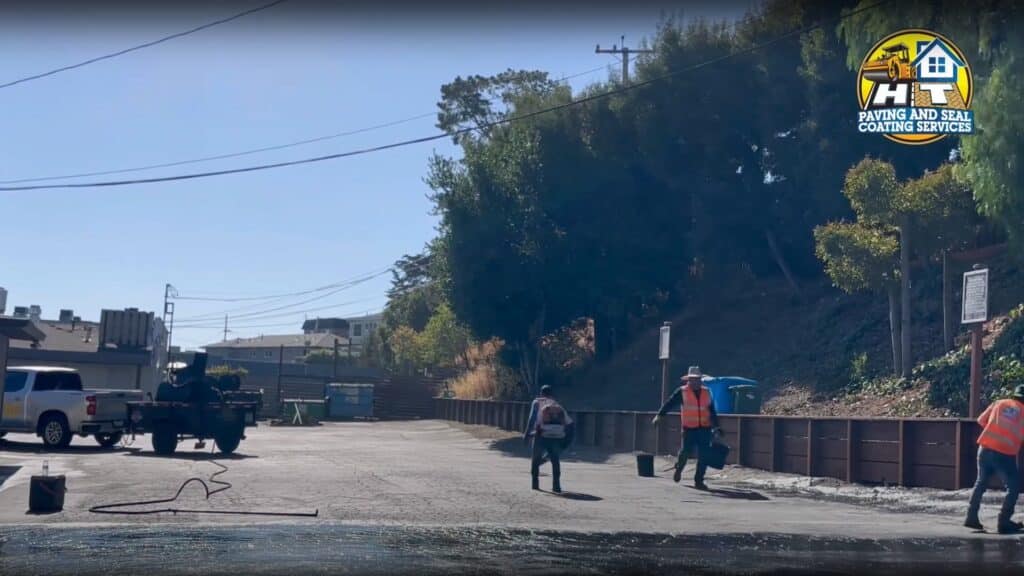
Wear of Road Markings in Different Climates
Road markings are key for traffic safety. They guide and direct traffic.
Like asphalt, they face many environmental factors that can damage them quickly. The climate greatly affects how long and visible these markings stay.
- UV Degradation: In sunny areas, road markings made of traditional paint fade fast. UV rays break down the paint, making it less reflective.
- Effect of Excessive Heat and Sun: Extreme heat makes the paint brittle and prone to cracking. This leads to faster wear and chipping.
- Wear from Usage: Vehicles, even heavy ones, wear down the markings. Tire friction erodes the paint over time.
- Rain and Moisture: Moisture can cause some markings to peel or smudge. Water pooling on roads also erodes paint faster.
- Snow and Ice: In cold areas, snowplows can scrape and erode markings. Salt and ice-melting chemicals also damage the paint.
Recommendations for Maintaining Road Markings:
- High-Quality Materials: Use paints and materials that resist UV and wear. This makes markings last longer before needing to be replaced.
- Protective Coatings: Apply coatings over markings for extra protection. They shield against the sun, moisture, and wear.
- Regular Inspections: Check markings often to spot fading or wear. Fix them early to avoid safety risks.
- Modern Techniques: Consider using thermoplastics or preformed tapes. They are more durable and less prone to fading.
Protecting asphalt from weather damage is a must. But with the right steps, you can make it last longer. At HT PAVING AND SEAL COATING SERVICES, we have solutions for seasonal challenges. Contact us to safeguard your investment!

Choosing a Professional Sealing Company
Keeping your asphalt surfaces in top shape is key. That’s why picking the right sealing company is so important. Experts in sealing know how to keep your driveway or parking lot looking great. They use their skills to match the local weather, which affects your asphalt’s life.
Why Hire Experts?
Experts give you the best advice on sealants and how to apply them. If you don’t know what you’re doing, you might end up with a sealant that doesn’t last. They know when to apply sealant for the best results. This can make your asphalt last up to 66.67% longer, saving you money in the long run.
HT Paving and Seal Coating Services
HT Paving and Seal Coating is known for quality and customer happiness. They have years of family experience and a solid reputation. Their team carefully checks each job and uses special tools for the best results. Choosing HT Paving means you get experts who focus on lasting results and great service.
Our Commitment to Safety and Quality
At HT Paving, we put safety first in every project. We follow strict safety rules to keep everyone safe. This focus on safety helps us deliver lasting results.
Emphasis on Road and Workplace Safety
Safety is key in our work. Our team gets regular training to stay safe. We make sure they wear the right gear and take breaks to avoid heat exhaustion.
We also focus on making sure our work lasts. Our quality checks ensure our seals can handle different weather. This means our work is strong and reliable.
How We Implement Safe Practices
Safe practices go beyond just training. We use top-notch materials and tech. Our sealing work includes two coats to last longer and handle extreme weather.
Keeping our equipment in good shape is also important. It helps us work smoothly and safely. Choosing HT Paving means you get the best in safety and quality. Learn more about our quality assurance practices.
Customer Satisfaction at HT Paving
At HT Paving, making our customers happy is our main goal. The feedback we get shows how hard we work on every project. Our clients praise our quality and professionalism, showing we always try to do better.
Testimonials from Happy Customers
Our clients often share their positive experiences. They thank us for our attention to detail and high standards. Their words highlight our commitment to making them happy.
Our Guaranteed Satisfaction Policy
We promise satisfaction at HT Paving. We’re confident in our work and ensure it meets high standards. This policy builds trust and shows our dedication to great service.
Serving the Bay Area and Beyond
HT Paving is proud to serve the Bay Area and nearby areas in California. They offer top-notch asphalt sealing services. They focus on quality, meeting the needs of both homes and businesses.
Areas Covered by HT Paving
HT Paving Bay Area services many cities and communities. They make sure local people and businesses get reliable asphalt sealing. This wide reach helps them offer tailored solutions for everyone.
Tailored Services for Residential and Commercial Clients
HT Paving is ready to help with sealcoating for driveways, parking lots, or roads. They aim to provide high-quality service that makes your asphalt last longer and look better. Trust HT Paving to keep your asphalt in great shape all year.
Contact HT Paving for Your Sealing Needs
Thinking about asphalt sealing services? It’s easy to reach out to HT Paving. Just call us at (415) 774-6424. Our team is ready to help with your asphalt needs, including for cold weather.
Whether you have questions or need advice, we’re here for you. We’re committed to finding the right solution for your property.
How to Reach Us
Need help fast? Our phone line is ready for you. Our experts can guide you through setting up a consultation. We know asphalt sealing is key to your property’s care.
We aim to make working with us easy and smooth. Your satisfaction is our top priority.
Scheduling a Consultation
Ready to schedule a consultation? We’ll find a time that works for you. Investing in asphalt sealing can save you a lot in the long run.
With proper care, you could save up to 48% on repairs. Let HT Paving protect your asphalt surfaces all year round.
FAQ
Can asphalt sealing be done in cold weather?
Yes, you can seal asphalt in cold weather. But, it needs the right conditions and care. The best temperature is above 50°F for the best results.
What is the best temperature for asphalt sealing?
The best time to seal asphalt is when it’s over 55°F. This temperature helps the sealant cure well and last longer.
What are cold weather asphalt maintenance tips?
In cold weather, check the asphalt for moisture or ice first. Seal it when it’s warmer. Also, cover the area after sealing to protect it from sudden cold.
What types of sealants are suitable for cold weather?
For cold weather, use sealants like latex-based ones. They work in temperatures as low as 40°F. Choose the right sealant for cold weather.
How does humidity affect asphalt sealing?
Humidity affects how fast sealants dry. Less humidity means faster drying. But, more humidity can slow it down, causing imperfections.
What are common misconceptions about cold weather sealing?
Some think you can seal asphalt in any weather. But, it needs the right temperature. Rain or snow can also stop the process.
Why is hiring professional sealcoating contractors recommended?
Pros know the best sealants and techniques for all weather. They ensure your asphalt is sealed right, even in tough weather.
How can clients ensure safety during asphalt sealing?
Safety comes from following strict rules and training workers well. This ensures safe practices on every job.
How can I find customer testimonials for HT Paving?
Check HT Paving’s website or social media for testimonials. They show the company’s commitment to making customers happy.
What areas does HT Paving services?
HT Paving serves the Bay Area and nearby in California. They offer custom asphalt sealing for homes and businesses.
How do I contact HT Paving for my sealing needs?
Call HT Paving at (415) 774-6424. They’ll talk about your needs or set up a time for sealing services.

